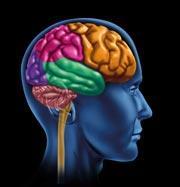Research shows that students perform better when they are taught using resources designed to engage their working memory

Working memory is our ability to recall and manipulate new information, combining this with information drawn from long-term memory, to make sense of a particular situation. But how is this important in chemistry? Chemistry can sometimes be hard to learn because it works on different levels, ie the observable, the micro level with its symbolic representations, and frequently uses words in ways that have different meanings from everyday use. To help students learn chemistry teachers break down information into manageable chunks and use diagrams, models and analogies to explain concepts. Furat Hussein and Norman Reid from the University of Glasgow have investigated if this process actually works.1
The researchers worked with a sample of 1600 chemistry pupils from Years 10 and 11 in different schools in the United Arab Emirates. Initially the research team carried out a survey of the pupils to diagnose the general types of learning difficulties in the chemistry syllabus. Next the pupils completed a written exercise based on structural communication grids, which are an alternative assessment approach to multiple-choice questions designed to inform researchers on how pupils' ideas are linked together. Based on these insights Hussein and Reid produced resources designed to break down the work into appropriate chunks with dialogue boxes, diagrams etc.
To test the effectiveness of the new resources each year was split into two groups, with one group taught a topic using the resource and the second using conventional means. A second topic was then taught using the alternative teaching method with each group. The pupils were tested on each topic to determine which approach was more effective.
The test results showed that in each case pupils using the resources performed approximately 13 per cent better than the control group. According to Reid, the research shows the importance of teaching within the pupils' working memory capacity.
References
- F. Hussein and N. Reid, Res. Sci. Tech. Educ., 2009, 27 (2), 131.






No comments yet